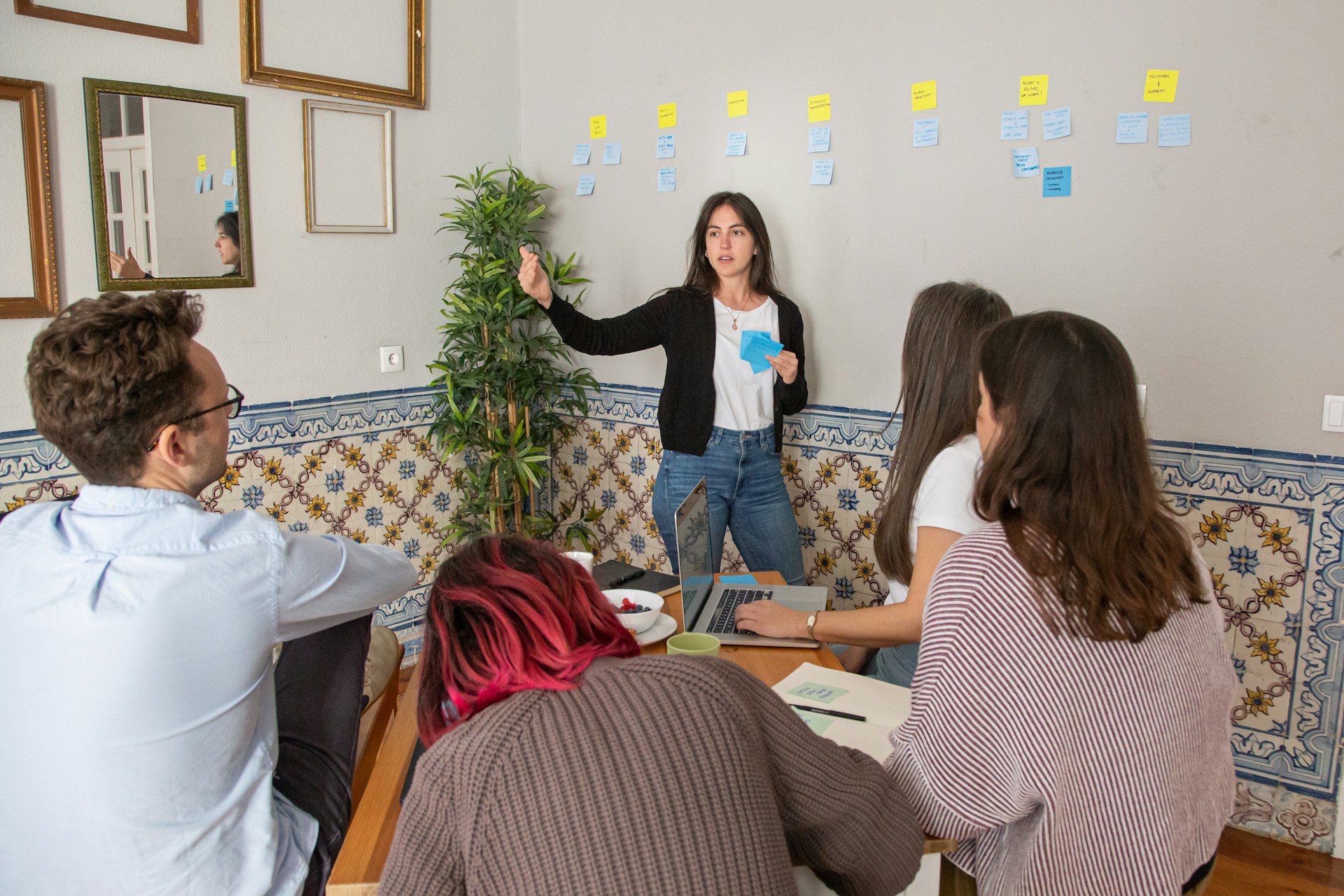The Power of Perspective: How Implicit Bias Shapes Our Understanding

Our perspectives are what drive our attitudes, behaviours and choices. How we see our environment informs how we interact in our environment and the people in it.The formation of our perceptions is largely done beyond our conscious awareness. This means that we unknowingly hold attitudes, prejudices, and judgements toward people, places and groups. These unconscious perceptions are known as implicit bias. We may form implicit biases toward racial groups, sexual orientation, education, or gender.Unconscious attitudes can severely impact your treatment of others and your behaviour in the workplace. Our society is full of implicit biases but people are becoming more aware than ever of their harmful impacts and are learning how to manage them.This article will explore the power perspectives on behaviour and how implicit bias shapes our understanding of the world around us. We hope that with a discussion of the impact of unconscious bias, we can realise and accept that we all hold implicit beliefs about ourselves and each other. With awareness, acceptance and action we can begin to unravel unconscious perspectives and increase our compassion and understanding of others.
Understanding Implicit Bias
We are constantly reading our environments and processing our experiences. There is an overwhelming flow of data to be processed, therefore, our brain often takes some shortcuts.Heuristics is the scientific term given to this neural mechanism. Bias is not always born out of ill intent or the facilitation of ignorance. Often, bias is our brain's way of simplifying reality so it can make sense of a certain situation or environment. It reads the environment for information, groups and sorts data, scans for threats and makes a judgement for our safety.This process becomes an issue when we unknowingly cultivate negative, unfair and uninformed perceptions about individuals or social groups. When implicit bias facilitates a discriminatory attitude, our perceptions no longer serve us.Implicit bias toward social groups impacts our ability to make rational and informed decisions, particularly in the workplace. Implicit biases in decision-making processes can prevent equal treatment and equal opportunities for all employees.Recognising that we all have implicit bias is the first step to creating a more equal and compassionate environment at work. Becoming aware of where our own bias lies can help us to overcome discriminatory tendencies and speak up when we recognise it in others.
Implicit Bias in Action
Examples of implicit bias are found in various areas of society. Education, healthcare and criminal justice are, unfortunately, critical areas where people are discriminated against due to their religion, race, gender or sexual orientation.For instance, ‘white resumes’ are more successful in the recruitment process or minority groups are given less preference in medical treatments. The consequences of implicit bias in these decision-making processes put people's health at risk and create places of employment that lack diversity and equality.For our society to become more compassionate and fair we must address the inequalities we see. Implicit bias is only the beginning. Our attitudes and perceptions can compound and exacerbate other forms of discrimination. What begins as a silent belief can turn into a harmful attitude of racism or sexism.
Recognising and Confronting Implicit Bias
It can be a challenge to accept that you may have implicit biases but it is important to realise that we all hold some form of unconscious beliefs about others. This is not to be judged or criticised, it is simply necessary to become aware of them and to learn to manage them.Tips for recognising implicit bias in oneself
- Reflect internally after interactions with others from different social groups
- Note any beliefs surrounding people who are different from you
- Practice self-awareness in moments of judgement
- Evaluate your judgements and get to their root
- Seek external help to overcome implicit bias, such as digital coaching.
Implicit Bias in the Workplace
Workplace culture is intimately affected by implicit bias, from recruitment screenings and decision-making to idea-sharing and team morale.Implicit bias can show itself in discrete ways. Exclusion of employees due to a social difference, women suggesting fewer ideas in male-dominated meetings or employees from minority groups not applying for roles even if they are qualified.If prejudice in the workplace is tolerated it will be reflected in the company culture and the potential of the organisation will inevitably be limited.It is the responsibility of all employers to create an inclusive workplace environment that does not tolerate discriminatory behaviours stemming from implicit bias. An employer can take charge and prevent the tolerance of implicit bias by providing resources and training to their workforce that is centred around managing their implicit bias.Studies show that taking implicit bias tests and becoming aware of your implicit bias is not enough. Training based on purely becoming aware of bias and accepting that it exists can encourage complacency around the issue. Employees tend to think nothing can be done if everyone has biases and no one can prevent them from forming.Harvard Business Review details the essential elements of effective bias training and stresses the importance of providing employees with resources to “manage their biases, change their behaviour, and track their progress”. It is not enough for employers to make their employees aware, they must also provide the tools for employees to work through their bias.
Best practices for employers to address implicit bias:
- Understand what areas of the business are most vulnerable such as recruitment, promotions and performance evaluations.
- Set clear requirements and minimum standards when hiring before evaluating any potential candidates.
- Expose your workforce to counter-stereotypical information.
- Nurture a culture of empathy through open communication and group discussions.
- Be aware of social groups forming and encourage individuals from different backgrounds to mix.
- Empower employees to improve themselves and their mindsets.
For employers to make a significant cultural change employees will need encouragement and guidance. One of the most effective ways to impact company culture is to invest in an external coaching program. As a neutral party, a coach can often make more of an impact on employees’ perspectives than their employer. Digital coaching is a great way to inspire change, alter perspectives and improve interpersonal relationships. Programs can be tailored to the specific needs and requirements of the company and can be taken completely online.
Final words
Unconscious and harmful beliefs shape our society and define how individuals interact with each other. The cultivation of compassion and taking action against bias have never been more demanded within our society. Steps must be taken to address personal bias as well as the collective bias that you witness.The level of bias present within your workforce will have a significant impact on the quality of the interpersonal relationships of your employees, the sense of belonging and the level of diversity and inclusion. Individuals and organisations have a responsibility to address and work through bias in order to create a more inclusive and equitable professional world. Take charge and make the investment today to ensure your workplace is a place of zero tolerance toward discrimination and prejudice.
FAQ
Yes, executive coaching plays a key role in retaining and engaging senior leaders by giving them space to reflect, grow, and lead with purpose. Through individualised support, executives strengthen communication, decision-making and resilience — all of which drive engagement and long-term satisfaction.
With CoachHub Executive™, organisations not only see improved leadership performance but also greater alignment, motivation and confidence among their top talent, resulting in higher retention and a stronger leadership pipeline.
CoachHub Executive™ goes beyond one-to-one sessions by integrating technology, measurable insights and continuous learning into every coaching journey. Each executive benefits from personalised matching with certified coaches and flexible session formats to reinforce development between sessions.
While traditional coaching often lacks scalability or measurable tracking, CoachHub ensures impact visibility through data-driven dashboards, 24/7 scheduling flexibility and a consistent, high-quality experience for leaders worldwide, that can be tailored to your organisation's goals.
Yes, executive coaching is delivered across 90 countries in 40+ languages, with localised coach networks that meet the cultural and business needs of global organisations.




.svg)


.svg)





.png)



.jpeg)